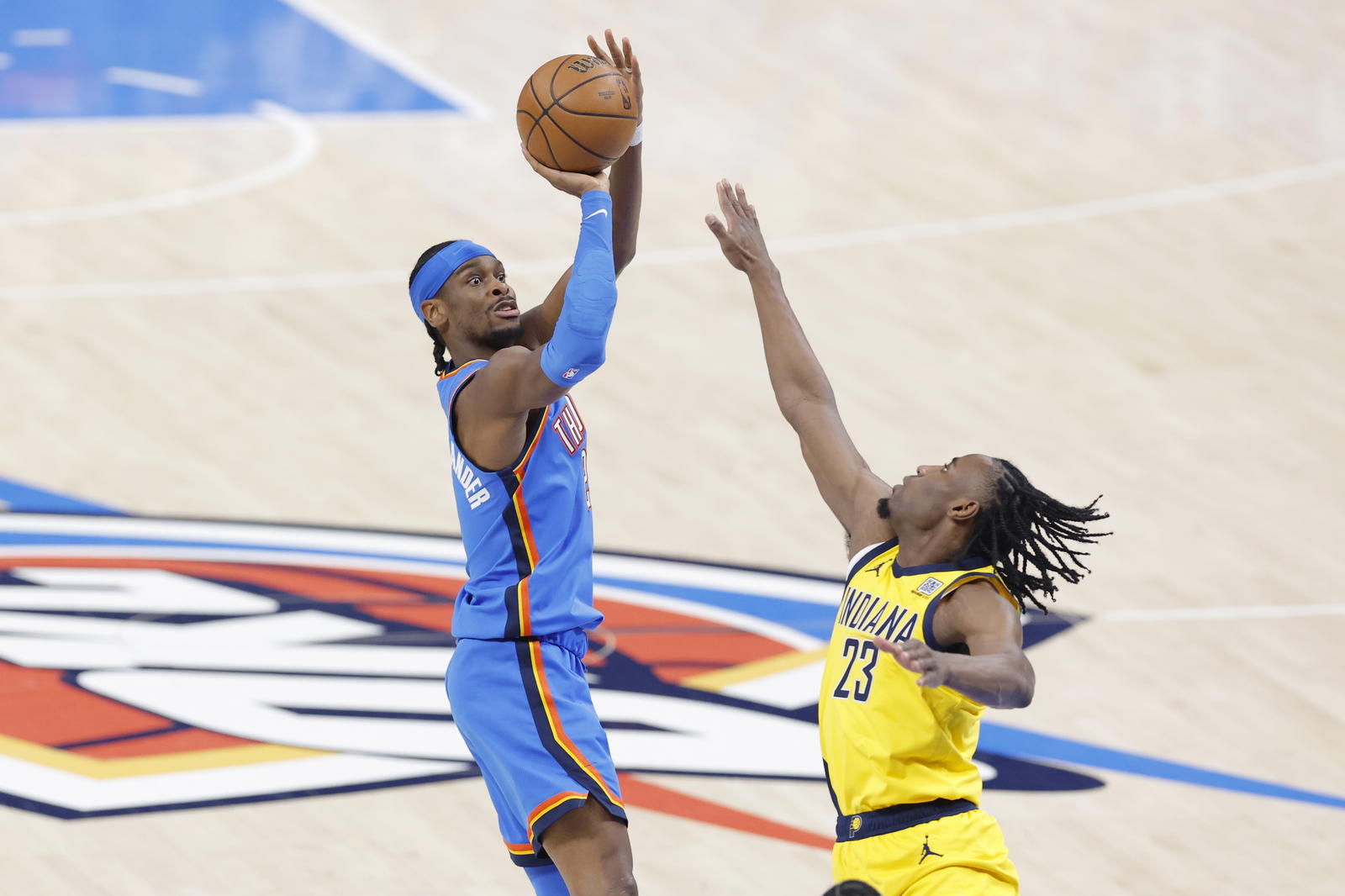

Jalen Williams took a massive third-year leap and was rewarded with All-NBA and All-Defensive honors. A wrist injury plagued Williams throughout the playoffs, but it didn’t stop the Santa Clara product from delivering when the Thunder needed him most.
Will he continue to shatter expectations by making yet another leap? Check out three areas that could facilitate this climb.
Rim pressure
Williams is explosive, crafty and boasts an enormous wingspan. He’s naturally built to be a slasher, which has been the case since his rookie season. And yet, there is still untapped potential in terms of his volume at the rim and overall shot selection.
According to Basketball Index, 270 players last season logged at least 1000 minutes, and Williams ranked 63rd in unassisted rim attempts per 75 possessions. That’s a good but not great outcome for a player of his talent and frame.
Williams would benefit from embracing contact to a higher degree and swapping a bit of finesse for power. Cutting down on his fallaway runners is an excellent place to start because it’s a low-probability shot relative to other options.
If he optimizes his shot selection and drives with more physicality, then it may lead to an offensive explosion.
Williams’ 40-point performance in Game 5 of the NBA Finals is a perfect example of his ceiling when he enters attack mode.
Free throws
Williams also ranked 54th in fouls drawn per 75 possessions and 91st in drive foul drawn rate. Racking up free throws has never been his strength, but it’s a vital skill to develop.
For example, every coach and fan would give a 40% 3-point shooter the green light to fire at will.
Meanwhile, the collective groans are audible when a player who shoots 60% from the charity stripe steps up for a pair of free throw attempts.
But it’s the same outcome! Both of those examples lead to 1.2 points per possession on average. Now imagine the productivity of an 80% free throw shooter — that’s the strength of this shot type.
Free throws are highly correlated with increased rim pressure, so Williams can, fortunately, improve both areas simultaneously.
Last postseason was an encouraging start, as he jumped from 4.8 attempts per 75 possessions in the regular season to 5.8 attempts per 75 in the playoffs.
Defensive rebounding
It’s time to nitpick because there are no other considerable flaws in Williams’ game.
His defensive rebound percentage was a touch below league average last season, which is low for a player who mostly spends time at power forward.
Isaiah Hartenstein covers up this deficiency, but the minutes with Chet Holmgren as the sole big could benefit from improved rebounding.
Now, Williams expends so much energy on both ends of the court that he can be forgiven for not flying into the scrum on every possession. It’s more of an ideal improvement rather than a necessary one.
 3 Areas of Improvement for Shai Gilgeous-Alexander Heading Into 2025–26 Season
Shai Gilgeous-Alexander’s 2024-25 season was one for the record books. He joined Kareem Abdul-Jabbar, Michael Jordan and Shaquille O’Neal as the only players across NBA history to win MVP, Finals MVP, and the scoring title in the same season.
3 Areas of Improvement for Shai Gilgeous-Alexander Heading Into 2025–26 Season
Shai Gilgeous-Alexander’s 2024-25 season was one for the record books. He joined Kareem Abdul-Jabbar, Michael Jordan and Shaquille O’Neal as the only players across NBA history to win MVP, Finals MVP, and the scoring title in the same season.
